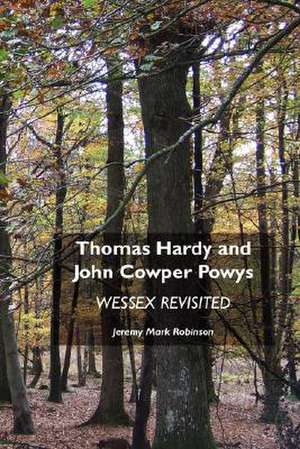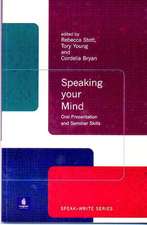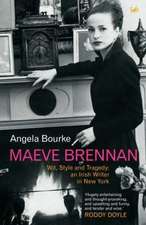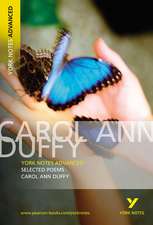Thomas Hardy and John Cowper Powys
Autor Jeremy Mark Robinsonen Limba Engleză Paperback – 29 feb 2008
Both Thomas Hardy and John Cowper Powys created a poetic Wessex landscape. Hardy's Wessex has entered popular folklore and myth, and is used in the promotion of holidays, walks, tours, museums, hotels, even town councils.
John Cowper Powys's Wessex, explored in A Glastonbury Romance, Wolf Solent, Maiden Castle and Weymouth Sands, among other novels, is less well-known: a place of secret corners, mossy walls, ancient earthworks, Somerset wetlands and ferny hollows.
Both writers are discussed thematically for their sense of nature, mythology, philosophy, painting, sensualism, labour, folklore and the family. D.H. Lawrence is referenced throughout as a bridge between Hardy and Powys. Finally Jeremy Robinson considers the film versions of Hardy's novels. This is a valuable addition to the criticism of Hardy and Powys.
John Cowper Powys is difficult to categorize. We place him (usually) in amongst D.H. Lawrence, Mervyn Peake, Robert Graves, William Blake and Thomas Hardy. At first glance, Powys seems to be working in the British nature poetry tradition of William Wordsworth and Edward Thomas. His immediate predecessors are Hardy and Lawrence. In Hardy;s fiction (and Emily Bronte's), one finds that fierce enmeshment of nature mysticism and character. But Powys's novels wholly lack Hardy's narrative drive and feeling for drama and development. From Hardy, however, Powys learnt how to interrelate landscape and psychology in an authentic manner. Whereas Hardy is concerned with the furtherance of the dramatic story, above all, Powys is more interested in the ecstatic states of beingness. In this Powys has much in common with Lawrence. These writers use the details found in nature as vehicles for their characters' feelings. Lawrence uses these musings to open up his text to wider issues of human emotions or politics. In Powys's work, the movement in meditation is inward, downward and backward - into the worlds of history, mythology, and the claustrophobia of the self.
Preț: 122.75 lei
Nou
Puncte Express: 184
Preț estimativ în valută:
23.49€ • 24.53$ • 19.40£
23.49€ • 24.53$ • 19.40£
Carte tipărită la comandă
Livrare economică 15-29 aprilie
Preluare comenzi: 021 569.72.76
Specificații
ISBN-13: 9781861711236
ISBN-10: 1861711239
Pagini: 276
Dimensiuni: 156 x 234 x 15 mm
Greutate: 0.39 kg
Editura: Crescent Moon Publishing
Locul publicării:United Kingdom
ISBN-10: 1861711239
Pagini: 276
Dimensiuni: 156 x 234 x 15 mm
Greutate: 0.39 kg
Editura: Crescent Moon Publishing
Locul publicării:United Kingdom
Notă biografică
Jeremy Robinson has published poetry, fiction, and studies of J.R.R. Tolkien, Samuel Beckett, Thomas Hardy, André Gide and D.H. Lawrence. Robinson has edited poetry books by Novalis, Ursula Le Guin, Friedrich Hölderlin, Francesco Petrarch, Dante Alighieri, Arseny Tarkovsky, and Rainer Maria Rilke. Books on film and animation include: The Cinema of Hayao Miyazaki ¿ Hayao Miyazaki: Pocket Guide ¿ Princess Mononoke: Pocket Movie Guide ¿ Spirited Away: Pocket Movie Guide ¿ Pasolini: Il cinema di Poesia/ The Cinema of Poetry ¿ The Art of Masamune Shirow (3 volumes) ¿ The Ghost In the Shell Book (2 volumes) ¿ Fullmetal Alchemist ¿ Blade Runner and the Cinema of Philip K. Dick ¿ Blade Runner: Pocket Movie Guide ¿ The Cinema of Donald Cammell ¿ Performance: Donald Cammell: Nic Roeg: Pocket Movie Guide ¿ Ken Russell: England's Great Visionary Film Director and Music Lover ¿ Tommy: Ken Russell: The Who: Pocket Movie Guide ¿ Women In Love: Ken Russell: D.H. Lawrence: Pocket Movie Guide ¿ The Devils: Ken Russell: Pocket Movie Guide ¿ Walerian Borowczyk: Cinema of Erotic Dreams ¿ The Beast: Pocket Movie Guide ¿ The Lord of the Rings Movies ¿ The Fellowship of the Ring: Pocket Movie Guide ¿ The Two Towers: Pocket Movie Guide ¿ The Return of the King: Pocket Movie Guide ¿ Jean-Luc Godard: The Passion of Cinema ¿ The Sacred Cinema of Andrei Tarkovsky ¿ Andrei Tarkovsky: Pocket Guide.
















